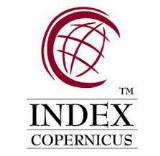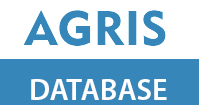
A study of accumulation and quantity of microelements with high toxic effects on bone and muscle tissue of reptiles in urbanized areas of Absheron
Research article: A study of accumulation and quantity of microelements with high toxic effects on bone and muscle tissue of reptiles in urbanized areas of Absheron
Author: A.R. Hashimova1,2
1Department of Medical Biology and Genetics, Azerbaijan Medical University, 167 Samad Vurgun Str., Baku AZ 1022, Azerbaijan
2 Laboratory of Physics and Chemistry of Harmful Impact on the Environment, Institute of Radiation Problems, Azerbaijan National Academy of Sciences, 121 Huseyn Javid Ave., Baku AZ1143, Azerbaijan;
*For correspondence: Aysel-hesimova@mail.ru
Accepted for publication: 26 May 2020
Abstract:
The purpose of this research is to determine the quantity of some toxic microelements in bone and muscle tissue of background reptile species, compare this quantity with average standard quantity and thereby to study the impact of environmental pollution on reptiles. The accumulation and amo- unt of microelements with high toxic effects have been studied in bone and muscle tissue of following Reptile species - Water snake (Natrix tessellata Laurenti, 1768), Mediterranean turtle (Testudo graeca Linnaeus, 1758) and Caspian bent-toed gecko (Cyrtodactylus caspius Eichwald, 1831) that have been collected from urbanized areas of Absheron peninsula. Studied microelements are copper Cu, nickel Ni, lead Pb, cadmium Cd and zinc Zn. All the five microelements that we have studied are mostly accumulated in the body of Caspian bent-toed gecko. It should be noted that the Caspian bent toed gecko is very small and more functionally active among background reptile species that we studied. Its occurrence in oil, gas wells and in areas exposed to technogenic and antropogenic pollution, indi- cates its plasticity and tolerance to toxic microelements.
Keywords: Technogenic, deionized water, spectrometer, microelement, bone and muscle tissue, biodiver- sity, urbanization
References:
Baimova S.R., Redkina N.N., Likasova N.A. (2007) Contents of heavy metals in the organs and tissues of animals from Bash-Kirian Transu-rals .News of Bashkir State University, 12(2): 27-28 (in Russian).
Bikova ЕА. (2014) Content and degree of accumu-lation of toxic elements and heavy metals in do-mestic mouse in Tashkent city. Actual problems of studying and conservation of animal kingdom in Uzbekistan. Tashkent: 23-25 (In Russian).
Bikova Е.А., Gashev S.N. (2014) Properties of microelement accumulation in mammals’ orga-nism related to urbanization. News of Samara Scientific Centre RAS, 16(1(4)): 1144-1148 (In Russian).
Chernykh N.A., Bayeva N.I. (2004) Heavy me-tals and human health. News of RUDN Univer-sity, Ecology and safety of vital functions, 1(10): 125-134 (in Russian).
Croteau M.C., Hogan N., Gibson J.C., Lean D., Trudeau V.L. (2008) Toxicological threats to amphibians and reptiles in urban environ-ments. Herpetological Conservation, 3: 197–209.
Diorditsa V.A. (2006) About toxic role of heavy metals. Kharkov; http://www.infmed.kharkov.ua/ TojMet.htm ((in Russian).
Dobryanskaya A.N., Shvets T.M., Yanovich D.A., Melnik A. (2014) Properties of copper ac-cumulation in ecosystem components of fishing pool. Scientific news of LNUVMB named after S.Z.Gjitskov, 16(3 (60)): 296-300 (in Russian).
Duskayev G.K., Miroshnikov S.A., Sizova E.A. et al., (2014) Impact of heavy metals on animal’s organism and environment of habitat (review). News of Meat Livestock, 3: 7-11 (in Russian).
Grajdankina E.I. (2001) Toxic elements and he-avy metals in biosubstrates of animals and human in large industrial centers of Tashkent. In: Actual problems of utilization helpful fossil reserves. Ташкент, 245-246. (In Russian)
Khabarov А.А., Budko E.V., Lushov K.A. et al., (2012) Zinc: Actuality and characteristics of bio-supplements (review). Electronic scientific jour-nal. Modern problems of science and education, {Electronic source} http://science-educati-on.ru/ru/article/view?id=6416
Khlebnikova A.N., Petrunin V.V. (2013) Zinc, its biological role and application in dermato-logy. News of dermatology and venereology, 6: 100-116 (in Russian).
Kist AA. (1987) Phenomenology of biogeo-che-mistry and bioinorganic chemistry. Tashkent: FAN, 236 p. (in Russian).
Klug A. (2010) The discovery of zinc fingers and their applications in gene regulation and genome manipulation. Annu. Rev. Biochem., 79: 213-231.
Kornick R., Zug K.A. (2008) Dermatitis. Nickel Named Contact Allergen of the Year Nickel- Wi-kiZero https://www.wikizero.com > nickel
Maksimyuk N.N., Rebezov M.B. (2015). Study of xenobiotics in the meat of wild boars.Interna-tional scientific-research journal Biological sci-ences, 2 (7 (38)): 81-85. (In Russian)
Masindi V., Muedi K.L. (2017) Environmental contamination by heavy metals. In: Heavy Me-tals, Chapter 7: p. 2-20.
Orbelis D., Xarland B., Skalny А. (2008) Biolo-gical role of macro- and microelements in human and animals. St.Petersburg, Science, Page 544.
Rathoure A.K., Rathoure G.K. (2017) Heavy metal pollution and its eco-friendly management. In: Bioremediation Current Research and Appli-cation, Chapter 2: 16-42.
Sheybak L.N. (2015) Role and importance of zinc in perinatology. Grodno State Medical University (Belarus), 2: 30-36.
Sheybak V.M. (2014) The biological significance and homeostatic regulation of zinc in mammals. Journal. Problems of Health and Ecology, 11-16. (In Russian)
Shtikova O.N., Leqonkova T.I., Stepina T.G. et al. (2015) Zinc deficiency as a risk factor of chro-nic pathology formation in children. Actual Problems of Medicine (Grodno), 2: 323-325.
Towar-Sanchez E., Hernandez-Plata I., Marti-nez M.S., Valencia-Cuevas L., Galante P.M. (2018) Heavy metal pollution as a biodiversity threat. In: Heavy Metal Pollution as a Biodiver-sity Threat. Heavy Metals, Chapter 21: 383-399.
Yanovich N.E., Yanovich D.O. (2014) Role of micronutrients in vital functions of fish. Scienti-fic news of LNUVMB named after S.Z.Gjitskov, 16(2 (59)): 345-373(In Russian)























